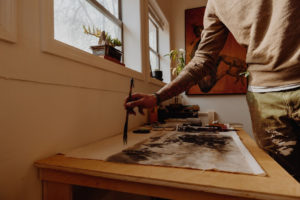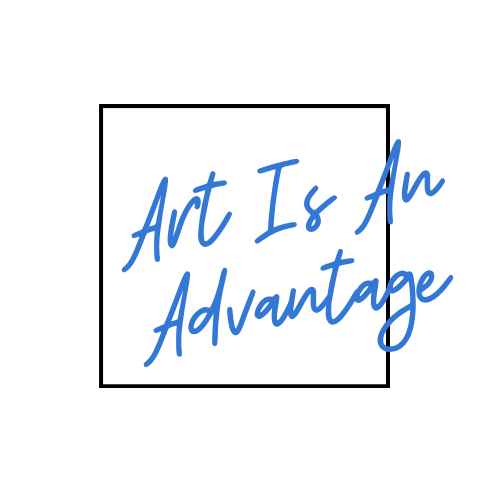by Rebecca Sciullo | Oct 19, 2018 | Consultations, Learning, Planning, Productivity, Resources, Tools
 Are you ready for 2019? Don’t wait til January to prepare! Now is the time that you should be reviewing how this year went. This helps you to put ideas and plans into place for next year. If this is something that you’ve never done effectively, I’d like to help. I’m devoting November and December to Micro-Consults focused on this topic
Are you ready for 2019? Don’t wait til January to prepare! Now is the time that you should be reviewing how this year went. This helps you to put ideas and plans into place for next year. If this is something that you’ve never done effectively, I’d like to help. I’m devoting November and December to Micro-Consults focused on this topic
Get ready for next year.
My Get Ready for 2019 with an End of Year Review Micro-Consult is designed to help you use what you learned in 2018 to implement an effective business plan for 2019. This consult will provide you with a tool to help you effectively review the past year in all areas of your art business including marketing, sales, inventory, time management and productivity. Using this information will allow us to determine what steps you can take now to get ready for 2019. We will also develop a quarterly schedule for you to keep yourself on track over the coming year.
If this sounds like something that could help you, please click here to schedule a “Getting Ready for 2019 with an End of Year Review” Micro Consult
Photo by S O C I A L . C U T on Unsplash
by Rebecca Sciullo | Oct 2, 2018 | Learning, Planning, Productivity, Time Management
 “I don’t have time.”
“I don’t have time.”
If you’re like most people, you probably say or think those words quite often. Lack of time often becomes a catch-all excuse for not getting work done in your art business – like creating, learning or just slowing down, taking time to plot and plan out your next steps.
Between work, family needs, school, and the endless items on your to-do list, it can be tough to find a spare minute to return an email, much less to post on social media, find and apply to shows or make it to a networking event. It may seem like if you just had one extra hour in the day, you would finally be able to fit in everything you want to do in your art business.
But the truth is, no one has an unfair advantage in the time department. We are all given the same 24 hours each day and it’s up to us how we choose to use them. Of course, there are certain things that simply must get done, like working and eating and taking care of a family. However, with some thoughtful planning, you can boost your day-to-day productivity and maybe even find some extra pockets of time to squeeze in what’s been eluding you.
If you can’t do a lot, do a little.
It’s easy to become paralyzed by the prospect of a large, time-consuming project whether that’s organizing your inventory, building a website or making time for your studio every day. When you hold yourself to sky-high standards and then miss the mark, it’s common to fall victim to the “all-or-nothing” mentality, which sounds something like this: “I missed my studio time today, so what’s the point of even trying to work”
Instead of overwhelming yourself and setting yourself up for failure, look for small ways to chip away at your goals, such as taking inventory of two pieces of art a day or simply working in your studio for twenty minutes.
Do the tough tasks first.
Take care of the most challenging or unpleasant tasks before you have a chance to talk yourself out of them. Hate networking? Attend an event that meets the first thing in the morning. Dreading posting on social media?. Schedule 15 minutes at the start of the day to do it, so it’s not nagging at you all day. Completing a tough task early will give you the motivation to plow through the rest of your day.
Schedule regular studio time.
Can’t schedule a large block of time in the studio every day? Can you try for a half an hour? Put it on your schedule and treat it like a real appointment, just as you would a client meeting. Whether it’s right when you wake up or in the space between dinner and bedtime, put it on your calendar along with your other tasks. As this starts to become a habit, try to gradually add a little more time until you’ve worked up to the ideal amount of time per day for your studio practice.
Get help.
It’s hard to let go of control of things, but you can only do so many things in a day. Sometimes, getting help is the only way to get everything done. You can’t hire someone to make your art for you. You can possibly ask your family members to help out around the house more or hire a cleaning service. Free up some time to focus on your business.
Eliminate unnecessary activities.
While everything on your plate might seem essential at first glance, there are likely some activities that can be trimmed. For a few days, track what you do in a day, then review the list. If you find your doing things that aren’t absolutely necessary and aren’t moving you toward your goals, give them the boot. You’ll likely be surprised by how much extra time emerges.
Take breaks.
If you don’t build periods of mental and physical rest into your day, you’ll find yourself taking unintentional ones. For example, you might schedule one or two 15-minute walks throughout the day. This gives you an opportunity to recharge while also sneaking in some thinking time to plan for your business. Or you could plan to reconnect with another artist during a coffee break. Without these planned time-outs, though, you’re more likely to succumb to mindless activities that offer little benefit to your business.
Get Enough Rest
Your might think staying up late helps you to get more out of your day. However, the time you save by sleeping less will likely mean sacrificing some of your energy, focus, and creativity. Resist the urge to burn the midnight oil. Instead, choose to rest and recharge so you can be functioning at your highest level the next day.
Each morning is a new opportunity to use your time more wisely. Be a little more thoughtful about how you use your time each day and you will move closer to meeting your business goals.
Would you like more tips on building your art business? If so, subscribe to the Artisan Advantage Mailing List.
Photo by Elena Koycheva on Unsplash
by Rebecca Sciullo | Sep 21, 2018 | Learning, Planning, Productivity
Stick to it!
 Consistency is essential to success with your art business. But, a regular routine of studio time and business activity is not always an easy thing to maintain.
Consistency is essential to success with your art business. But, a regular routine of studio time and business activity is not always an easy thing to maintain.
You start the week with the best intentions—to spend time in the studio, market your work, and make good choices about how you use your time. Then life happens. The dog is sick. School is canceled for the day. There could be a hundred other things that can get you off track. Before you know it, your plan is in trouble and your goals for the week aren’t looking very doable. Something has to give. Often, “what gives” is that plans for your business that week don’t happen.
So how do you change this pattern? Here are three tips for building consistency.
1 Build momentum one step at a time.
It’s never easy to change old habits or start new routines. The key to long-term consistency is building momentum. The hardest part is always getting things started. But once you’re moving, staying in motion and picking up speed becomes a lot easier. There are a lot of ways you can gradually build momentum as you work. Start with something that’s easy to complete and build from there. For example, set a goal of one social media post a day for your work. Then increase it to a post on two platforms each day. The simple act of setting a small amount of time aside time for this every day and sticking to it is enough to start building the habit.
2 Find an accountability partner.
Find a friend or family member whose judgment and opinion you respect. Each time you find yourself thinking about not sticking to your plan, write down the reason. Share this with your accountability partner and get an honest opinion about whether the reason is justifiable or just an excuse.
3 Always have a plan B.
Life is unpredictable. You need to have plan B ready—even before you actually need it. Plan B helps you to stay consistent with your goals when your regular routine doesn’t work out as planned. Surprises won’t throw you off track if you plan ahead. For example, make a short list of three specific marketing tasks for the week. Then, when you do get even a small amount of time, you can get right to business, rather than sit and think about what you need to do. Or, have your studio set up and ready to go as best as you can, so that when you get a moment to work, you ready. Put a little time into identifying the most common problems that disrupt your routine, and plan (in advance) what you can do to handle these problems without sacrificing your art business goals.
Being consistent does not mean being perfect.
There are days or weeks when it just might not work out how you planned. But, being mindful of how you can handle disruptions in your schedule will help you to stay more consistent in your business.
I hope these ideas help you overcome obstacles that crop up in your art business.
Would you like more tips on building your art business? If so, subscribe to the Artisan Advantage Mailing List.
Photo by Antonio Francisco on Unsplash
by Rebecca Sciullo | Sep 17, 2018 | Learning, Productivity
Dealing with Procrastination

Procrastinators, Rejoice! How Waiting Until The Last Minute Can Help Us recently grabbed my attention. Procrastination is a challenge for me. I’ve struggled with it since I was young, but I’ve gotten much better at managing it over the years.
I definitely agree with the author that procrastination can decrease stress in the short-term, boost creativity and make (or force) a person to complete tasks faster. Procrastinating, however, does not increase my mood or energy level and it’s not a long-term solution.
If you find yourself procrastinating a lot, the article offers some solid ideas on how to overcome it.
Here are a couple of other things that you can do.
Block out “Loose End” time blocks.
Schedule time in your week to take care of loose ends and outstanding tasks. Take an hour or so to tackle as many things as you’ve been putting off as possible. It might be making a decision on attending an event, scheduling a doctor’s appointment, answering an email or a phone call. Once you put your mind to it, you can end up accomplishing a lot in that time.
Find a Tool That Works
There are digital and paper solutions to help you be more efficient. I’ve been using the Full Focus Planner for six months now. Planning tools can help to keep you on task and encourage you not to drag your feet.
Do something.
If you are facing a particularly challenging project, it might help to just get the ball rolling in baby steps. Just do something, even if it is just one thing to move the project forward. Or, maybe you can just brainstorm a rough sketch of how you want to accomplish the task. Then, schedule time to revisit the project. Pushing yourself along in small increments can help to get a daunting task completed.
Recognizing that procrastination is an issue for you is the first step in overcoming it. Then, use these ideas to help yourself along the next time you find yourself putting things off.
For more tips and help with your art business, subscribe to Artisan Advantage’s email updates.
Photo by Kasper Rasmussen on Unsplash
by Rebecca Sciullo | May 7, 2018 | Consultations, Learning, Planning, Productivity
The Halfway Point
Can you believe 2018 is almost halfway over? For me, this is the time of year where things sometimes get a little off track and I take time to revisit and regroup with my business plan. If you are finding the same, here are three areas to review in order to get your art business plan back on track.
Three Areas To Review in Your Art Business Plan
Review year to date progress. How have your sales been so far? How is your studio time going? Have you sent out your newsletter on a regular basis? Is there some other goal or benchmark that you set for yourself that you can review? Don’t sweat what you did not get done. Rather, make a list of the positive things that you accomplished so far this year.
Review your daily activity.
How have you been spending your days? Are you following a set list of regular actions that you need to be taking in your business? Is something that you wanted to do every day not getting done, and if so, can you figure out why? By taking a look at what you are and aren’t doing on a daily basis, it will help you to make appropriate adjustments to your plan or schedule.
What does your calendar look like? Are you blocking out time on a monthly and weekly basis for your business? I recommend artists block out specific time for studio work and then specific time for business and marketing activity. Block out time on your calendar for these activities and then stick to your schedule. Don’t let anything get in the way of these preset appointments with yourself.
Going through this process is a great way to be accountable to yourself and get back on track if necessary. Or, it can give you a boost of motivation to power through the second half of the year.
If you’d like to get more news and information from me on a regular basis, sign up for my Create! Sell! Newsletter here.

Photo by Jazmin Quaynor on Unsplash
by Rebecca Sciullo | Apr 19, 2017 | Productivity, Time Management, Uncategorized
Do you take breaks during your work day? It’s proven that sitting is not good for our health. As an artist, you might work on your feet, which is a good start in not being sedentary all day…but even if you’re standing, it’s good to take mental breaks during your day.
I work at a desk, so I’ve made a practice of working for 25 minutes, and then taking a 5 to 10 minute break where I get up and move around. I decided to use this formula after reading the Pomodoro Technique Illustrated. Twenty five minutes seemed like a short amount of time at first, but I quickly realized that with some simple pre-planning, it was just enough time to help me to stay focused and get things done. In order to make the 25 minute blocks work for me, there is some simple pre-planning involved. I know exactly how many 25 blocks I will work in a given day and what I will be doing during those blocs. Otherwise, I would spend 5 of the 20 minutes figuring out what to do next. I ask my new best friend Alexa to remind me when 25 minutes are up so that I know to take my break.
What do I do during those 10 minute breaks? It varies. Since I work at home, I often use that time to do some light housework, throw a load of laundry in, fold some clothes or other chore. I’m always amazed at how much I can get done in those breaks. I also use some of the breaks to take time for calm meditation. If I have quick phone calls to return, I might do that while walking around the house to get on my feet.
During those 25 minute blocks, the key is that nothing gets me up from my desk. I save anything that I might want to do – like get a cup of coffee – for break time.
This system has worked so much better for me than my old habit of just sitting at my desk for hours and hours. I find that I’m much more productive and feel better at the end of the day.
If you’re not taking breaks during your work day, try to incorporate a system that works for you.
Do you have a system for taking breaks that works for you? Share it here in the comments below.
Would you like more tips and ideas for your art business? Please sign up for my free e-newsletter here.
 Are you ready for 2019? Don’t wait til January to prepare! Now is the time that you should be reviewing how this year went. This helps you to put ideas and plans into place for next year. If this is something that you’ve never done effectively, I’d like to help. I’m devoting November and December to Micro-Consults focused on this topic
Are you ready for 2019? Don’t wait til January to prepare! Now is the time that you should be reviewing how this year went. This helps you to put ideas and plans into place for next year. If this is something that you’ve never done effectively, I’d like to help. I’m devoting November and December to Micro-Consults focused on this topic




